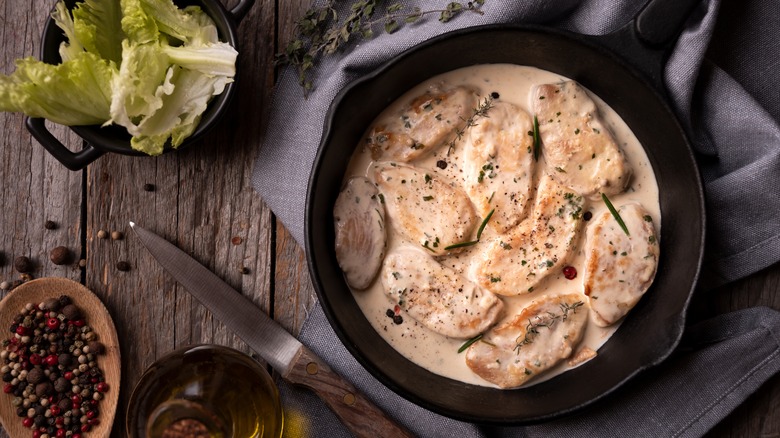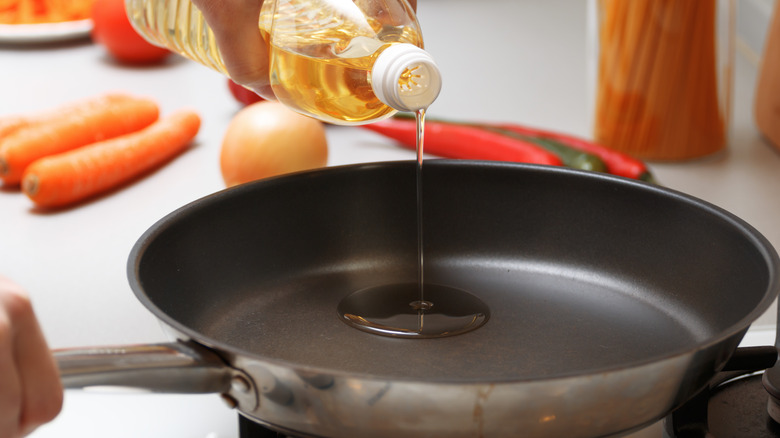How Much Fat To Use For A Pan Sauce
When searing meat, the juices and browned bits that get left behind are almost as delicious as the meat itself. After you deglaze the pan and whisk in a thickener, something magical happens — it turns into a delicious sauce. Whether you prefer wine over stock for deglazing, or flour over cornstarch for thickening, the combinations of ingredients you use can give each accompanying sauce its own personality while still maintaining that meaty essence in the background. However, it's easy for a sauce to go from delicious to destroyed if you're not whisking constantly, maintaining a steady yet not-too-aggressive heat, or using a nonstick skillet.
Furthermore, with meat typically comes fat, and whether you're starting off your sear in a clean pan or working with oil or butter, these factors play into how your sauce comes out. If working with a lean cut, the pan might be completely dry when the meat is removed, leaving you with no choice but to add in a bit of oil to loosen things up. However, the heat will render to oil fattier cuts that could result in a full pan of grease for starting a sauce. This could overpower any sauce you might build from the fond, but knowing how much oil is too much, not enough, or just the right amount can be tricky.
A thin coating
When attempting a pan sauce, only a thin coating should be left at the bottom of your pan before adding in your other ingredients. This might mean that you need to carefully discard a certain amount of hot oil in order to reach the correct amount or add fat to fully coat the bottom of the pan. Too much grease can result in those unsightly bubbles of oil that collect and float around in your sauce, refusing to emulsify.
If you're finding a lot of your pan sauces burning instead of toasting into a golden brown color, it's likely that you're using a fat with a low smoke point such as butter or the natural fat from meats. Surprisingly enough, natural fat can often have a lower smoke point compared to other oils. Higher smoke point oils are best, such as canola oil, olive oil, and avocado oil, as they can withstand higher heat for longer periods, preventing any future burnt sauces.

